Beyond the desert
Terra incognita
It's a magical place – if you like deserts and deserted places.
Peter van Kets (Professional adventurer/Motivational speaker) - Have you ever dreamt of exploring wild and fantastic places - just you and maybe a few of your favourite people? Nothing around you except the wind, the sun, the stars, the silence of the wilderness, and a sense that you have been cut off from the rest of the world.
The Namib Desert and its edges is one of these places. Having spent most of my younger days growing up in the hills around Windhoek and traveling extensively into its hinterland, I've always had the urge to return and explore with much greater insight and knowledge about the area - and life in general. One of these sections is at the most northern boundary, where the sand is channelled through the lunar Hartmann Mountains and collides with the crocodile-infested Kunene River (the border between Namibia and Angola). It’s a magical place – if you like deserts and deserted places.
When I first started conceptualizing an expedition into the Namib Desert and particularly the northern section, my first thought was that it would need to be captured on camera by the best photographer possible. A person who would enjoy extreme conditions and thrive on the physical challenges an expedition of this nature would demand. That person was Jacques Marais, an internationally acclaimed photographer, author of 12 travel adventure books, explorer, and father.
The concept of Beyond Expeditions was born. A series of five expeditions in Africa - taking us into terra incognita. The first of these would be Beyond the Desert Edge.
Our kick-off would be the stunning Wilderness Safaris luxury camp at Serra Cafema.
The terrain is fantastically rugged with zebra-striped mountains, blistering desert dunes, and a green snakelike body of water meandering toward the coast. Totally inhospitable except for a few Himba people who live there.
The first day on our fat bike saddles was an 11-hour epic of sand, sweat, and tears. Summiting the escarpment above the Kunene River, we came across a small Himba village - a small scattering of dilapidated mud huts where a local family had set up a transient kraal. It’s a hard life for these people who seek out an existence just on the threshold of survival. The day ends at the dry bed of the Ondusengo River.
Few people have passed through the stretch of the Namib Desert west of the Hartmann Mountains. Besides the incredibly adaptable gemsbok (oryx) and mountain zebra, there is no sign of life. The following day, after a brief look at a nearby spring, we ascend into what can only be described as the most beautiful place I have ever had the privilege of visiting, and on a mountain bike, no less. Jacques and I were surrounded by granite mountains with almost perfectly rounded boulders. Our Wilderness Safaris desert guru-guide, Gerhard Theron, who had joined the team for this section, called it the "Garden Route of the Namib".
One of the largest flat plains we crossed during this whole expedition was just before descending into the Hoarusib River. In every direction, as far as the eye can see, there is simply nothing. The only miracle is that, wherever we look, there are desert black rhino tracks and freshly thrashed dung piles.
The descent into the Hoarusib River is every mountain biker's dream; 25 km of wild oryx tracks between rugged, desolate mountains.
On the fourth day, I am strangely tired and suffering from quite serious lingering sinusitis, a small dose of sleep deprivation, and nagging pain in my buttocks!
There is this little voice in my head constantly speaking to me. We all know the voice. Every time I press down on my Giant Anthem's pedals, the pain shooting into my groin gets that voice going again. It’s a voice that I’ve heard many times before and I know I need to ignore it. Today, we would arrive at the famous Hoanib River. It was time to suck it up and get used to the new routine.
The dry riverbed is alive with game and is one of the few places where you can get up close to the elusive desert lion. We saw the first pride with two kilometres of our day’s ride left.
I started the ride out of the Hoanib River early in the morning. It begins at the confluence of the Hoanib and Moederoep Rivers and seems to wind endlessly up into the horizon and beyond. The riverbed is crusty in places which makes it easier to ride before it inexplicably turns soft. Having seen lions the day before, I’m keen to have my "bear banger" close at hand.
We arrived at the Achab River in the Palmwag Concession after an incredibly rocky ride through a rugged mountainous section. I settle into my camping chair with a cold frosty and as I do, a female elephant wanders into our camp. She digs her heels in, flaps her ears, hooks a 180º turn, and speeds off in the other direction. Unbeknownst to us, she was being hotly pursued by a large male who was very obviously in must. It was a quick encounter, but my first ever with desert elephants.
I was left with Johan, a Wilderness ranger who would guide me through the concession. We had just stopped to look at another herd of elephants meandering through the dense Acacia and were about to head off when we heard the first of a few mighty roars. I was a bit startled because it felt like the lions were upon us. About six kilometres later we descended slightly into a vast open plain that looked like the source of the Achab. I stopped just before we entered the plain as I noticed something that looked a little unusual about 100 meters away. At first, it looked like scattered sandstone rocks but when I looked closer, it was easy to see it was lions. Johan quietly bundled me and my Giant into the back of the van. We drove past three females and one male, all crouched and ready to pounce - sad at the lost opportunity.
Sandstone cliffs and deep garnet-coloured mountains line the track south of the Palmwag concession. I managed to get Jacques to join me on the best descent of the expedition from the top of the Huab River valley to the Ugab River. This downhill blitz of 46 km starts between the mountains and open plains, dodging ancient Welwitschia mirabilis plants, and slowly narrows into the most inhospitable yet most beautiful canyon until it’s just a mere four meters wide. This was one of the most beautiful rides of the expedition - and of my life. It was also the last of the true wilderness we were to experience during the expedition. Once we popped out of the Ugab Valley into the Brandberg area we faced civilization again, leaving the untamed behind. - www.petervankets.co.za; [email protected]
The Namib Desert and its edges is one of these places. Having spent most of my younger days growing up in the hills around Windhoek and traveling extensively into its hinterland, I've always had the urge to return and explore with much greater insight and knowledge about the area - and life in general. One of these sections is at the most northern boundary, where the sand is channelled through the lunar Hartmann Mountains and collides with the crocodile-infested Kunene River (the border between Namibia and Angola). It’s a magical place – if you like deserts and deserted places.
When I first started conceptualizing an expedition into the Namib Desert and particularly the northern section, my first thought was that it would need to be captured on camera by the best photographer possible. A person who would enjoy extreme conditions and thrive on the physical challenges an expedition of this nature would demand. That person was Jacques Marais, an internationally acclaimed photographer, author of 12 travel adventure books, explorer, and father.
The concept of Beyond Expeditions was born. A series of five expeditions in Africa - taking us into terra incognita. The first of these would be Beyond the Desert Edge.
Our kick-off would be the stunning Wilderness Safaris luxury camp at Serra Cafema.
The terrain is fantastically rugged with zebra-striped mountains, blistering desert dunes, and a green snakelike body of water meandering toward the coast. Totally inhospitable except for a few Himba people who live there.
The first day on our fat bike saddles was an 11-hour epic of sand, sweat, and tears. Summiting the escarpment above the Kunene River, we came across a small Himba village - a small scattering of dilapidated mud huts where a local family had set up a transient kraal. It’s a hard life for these people who seek out an existence just on the threshold of survival. The day ends at the dry bed of the Ondusengo River.
Few people have passed through the stretch of the Namib Desert west of the Hartmann Mountains. Besides the incredibly adaptable gemsbok (oryx) and mountain zebra, there is no sign of life. The following day, after a brief look at a nearby spring, we ascend into what can only be described as the most beautiful place I have ever had the privilege of visiting, and on a mountain bike, no less. Jacques and I were surrounded by granite mountains with almost perfectly rounded boulders. Our Wilderness Safaris desert guru-guide, Gerhard Theron, who had joined the team for this section, called it the "Garden Route of the Namib".
One of the largest flat plains we crossed during this whole expedition was just before descending into the Hoarusib River. In every direction, as far as the eye can see, there is simply nothing. The only miracle is that, wherever we look, there are desert black rhino tracks and freshly thrashed dung piles.
The descent into the Hoarusib River is every mountain biker's dream; 25 km of wild oryx tracks between rugged, desolate mountains.
On the fourth day, I am strangely tired and suffering from quite serious lingering sinusitis, a small dose of sleep deprivation, and nagging pain in my buttocks!
There is this little voice in my head constantly speaking to me. We all know the voice. Every time I press down on my Giant Anthem's pedals, the pain shooting into my groin gets that voice going again. It’s a voice that I’ve heard many times before and I know I need to ignore it. Today, we would arrive at the famous Hoanib River. It was time to suck it up and get used to the new routine.
The dry riverbed is alive with game and is one of the few places where you can get up close to the elusive desert lion. We saw the first pride with two kilometres of our day’s ride left.
I started the ride out of the Hoanib River early in the morning. It begins at the confluence of the Hoanib and Moederoep Rivers and seems to wind endlessly up into the horizon and beyond. The riverbed is crusty in places which makes it easier to ride before it inexplicably turns soft. Having seen lions the day before, I’m keen to have my "bear banger" close at hand.
We arrived at the Achab River in the Palmwag Concession after an incredibly rocky ride through a rugged mountainous section. I settle into my camping chair with a cold frosty and as I do, a female elephant wanders into our camp. She digs her heels in, flaps her ears, hooks a 180º turn, and speeds off in the other direction. Unbeknownst to us, she was being hotly pursued by a large male who was very obviously in must. It was a quick encounter, but my first ever with desert elephants.
I was left with Johan, a Wilderness ranger who would guide me through the concession. We had just stopped to look at another herd of elephants meandering through the dense Acacia and were about to head off when we heard the first of a few mighty roars. I was a bit startled because it felt like the lions were upon us. About six kilometres later we descended slightly into a vast open plain that looked like the source of the Achab. I stopped just before we entered the plain as I noticed something that looked a little unusual about 100 meters away. At first, it looked like scattered sandstone rocks but when I looked closer, it was easy to see it was lions. Johan quietly bundled me and my Giant into the back of the van. We drove past three females and one male, all crouched and ready to pounce - sad at the lost opportunity.
Sandstone cliffs and deep garnet-coloured mountains line the track south of the Palmwag concession. I managed to get Jacques to join me on the best descent of the expedition from the top of the Huab River valley to the Ugab River. This downhill blitz of 46 km starts between the mountains and open plains, dodging ancient Welwitschia mirabilis plants, and slowly narrows into the most inhospitable yet most beautiful canyon until it’s just a mere four meters wide. This was one of the most beautiful rides of the expedition - and of my life. It was also the last of the true wilderness we were to experience during the expedition. Once we popped out of the Ugab Valley into the Brandberg area we faced civilization again, leaving the untamed behind. - www.petervankets.co.za; [email protected]



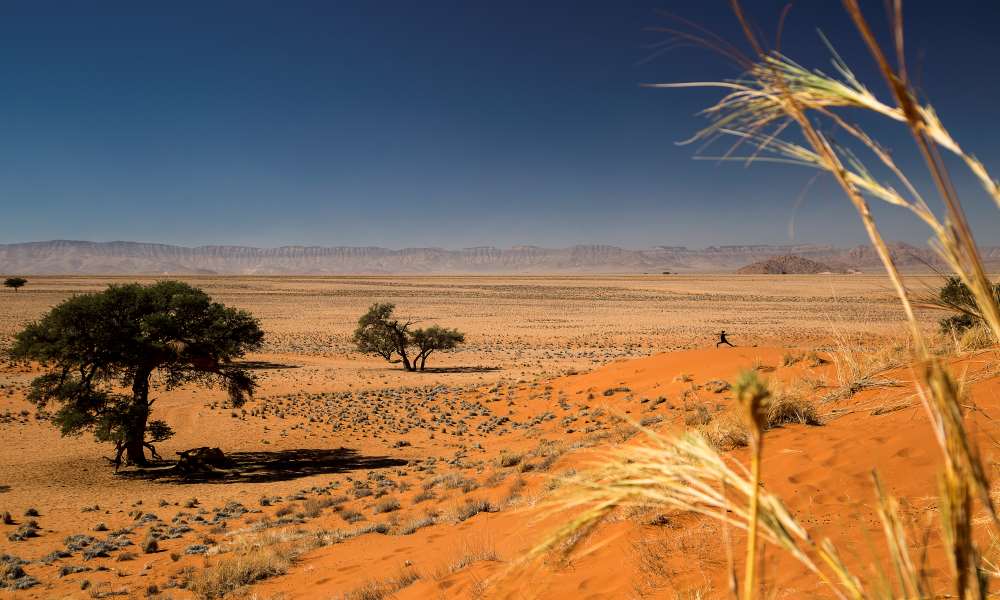
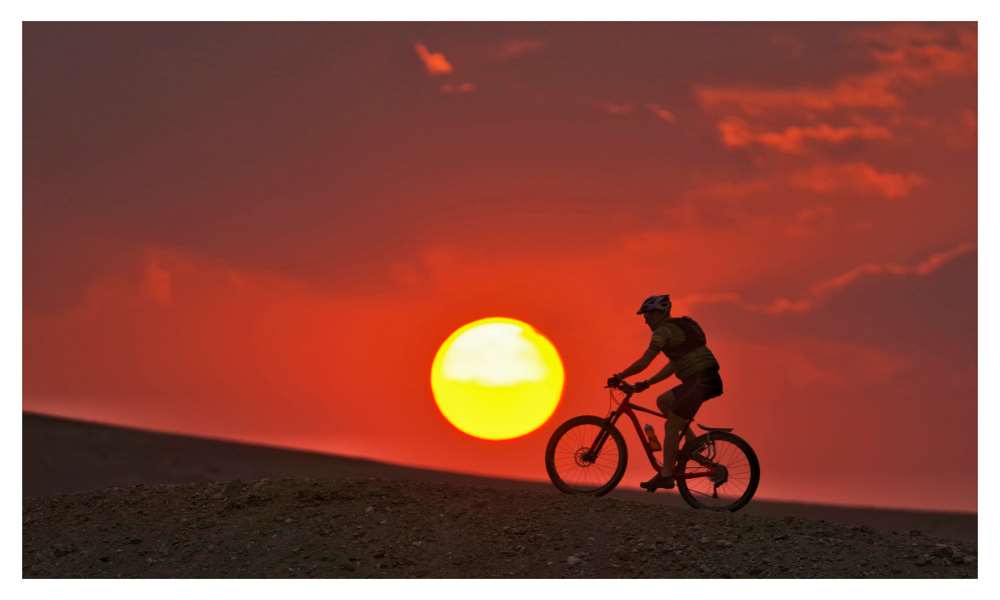
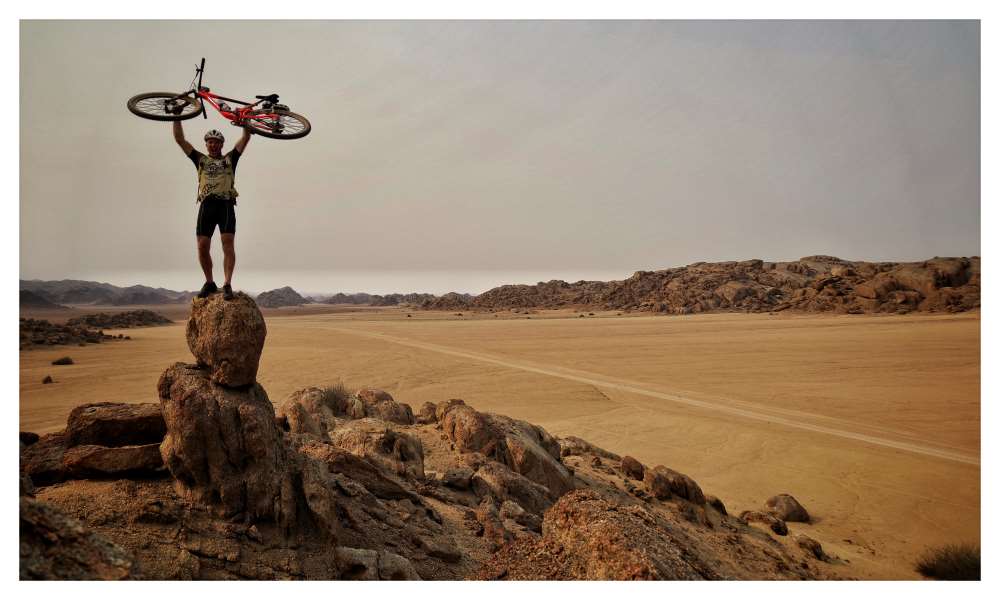
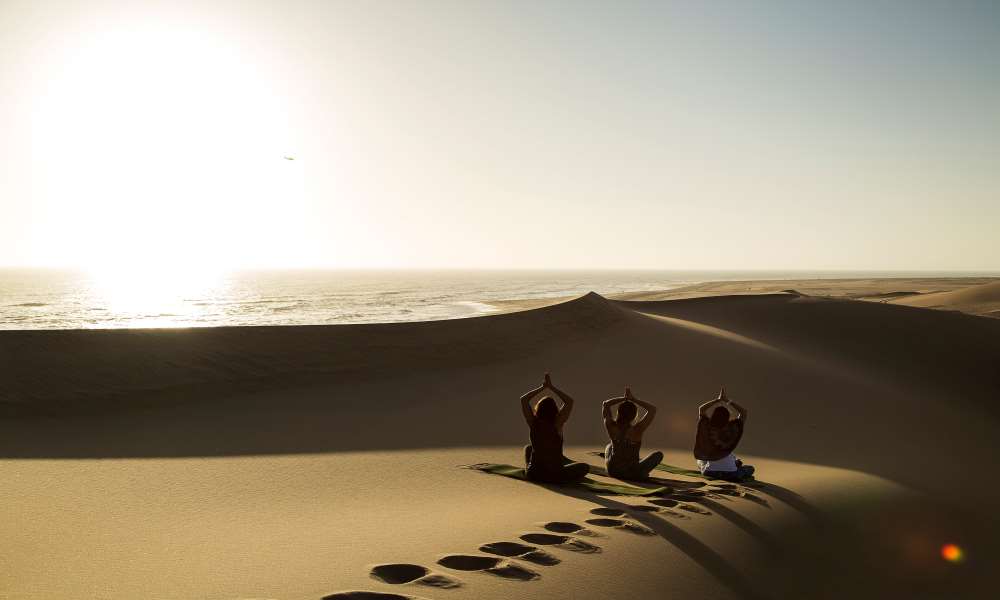
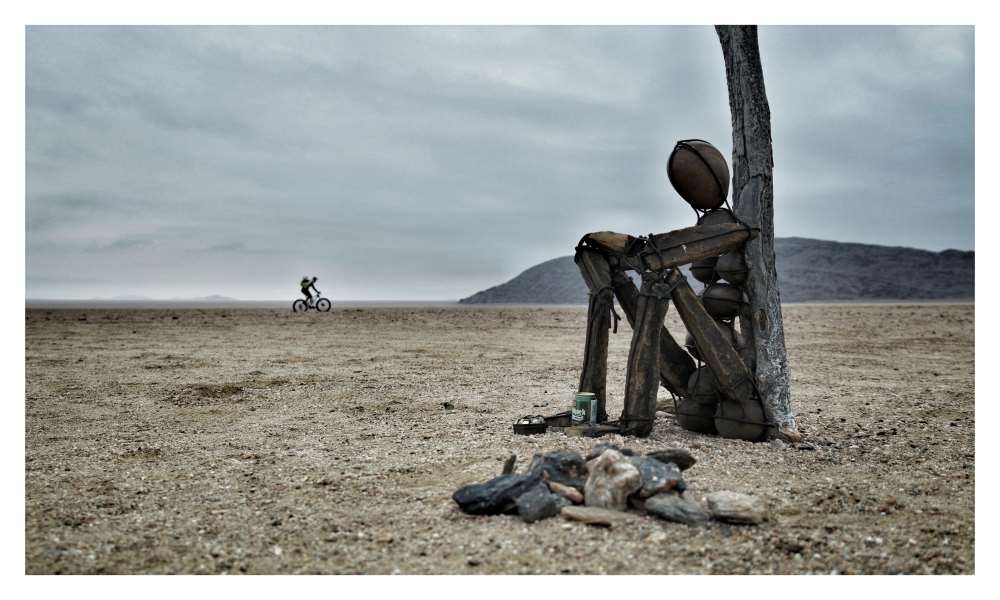


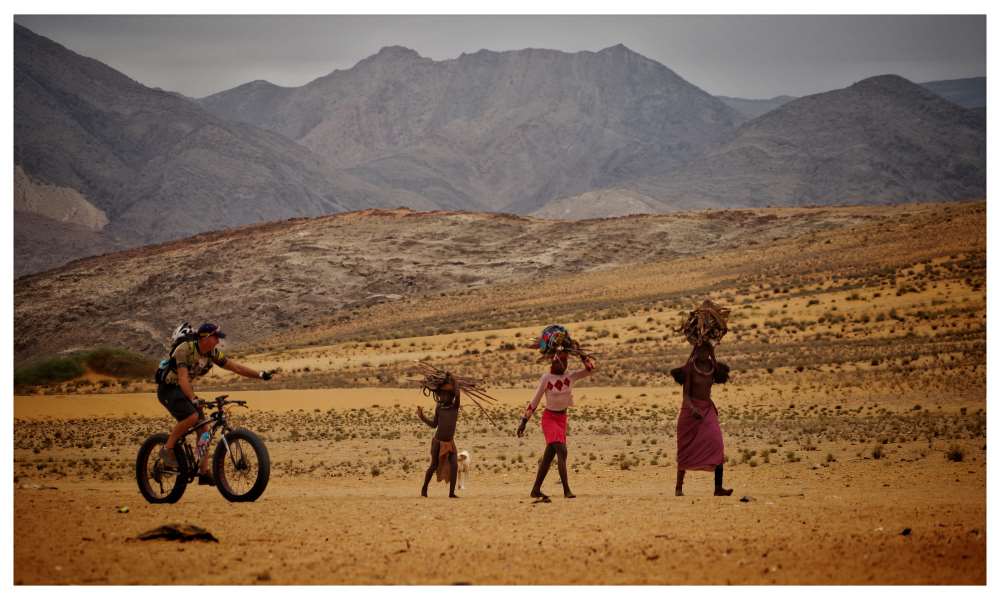

Comments
Namibian Sun
No comments have been left on this article